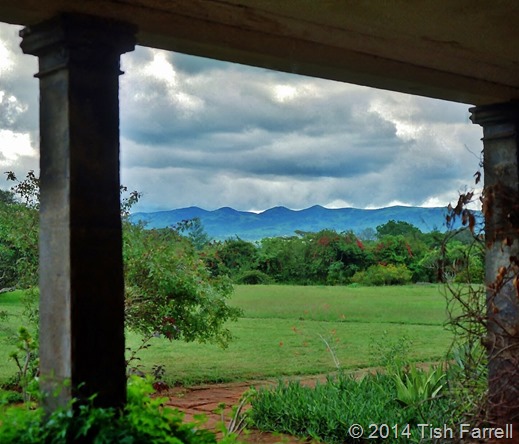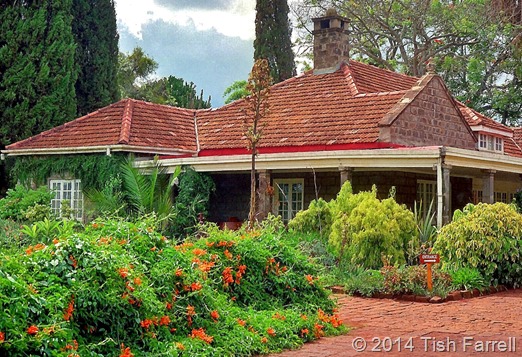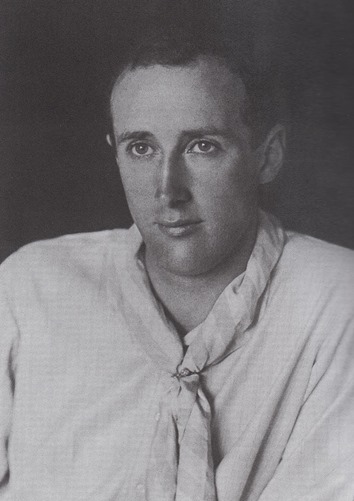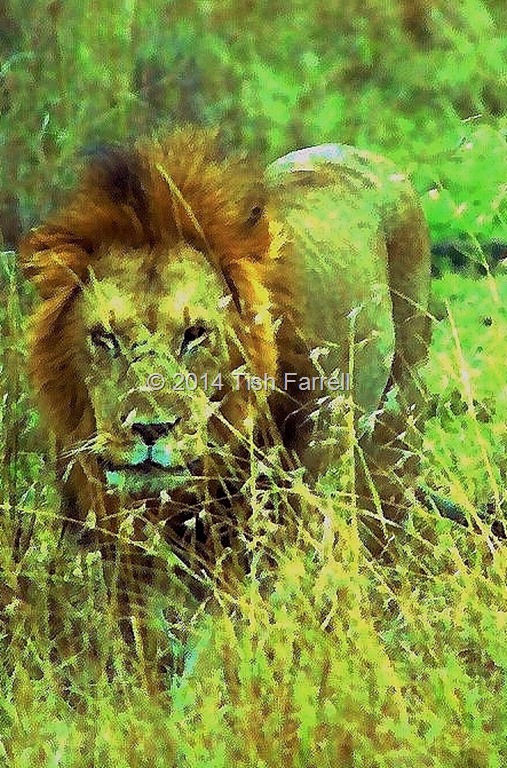I wrote this piece back in March. Every day since several people have clicked on it, and on one single day in the summer this rose to 170 viewings. I have no idea why this happened, or why, judging by the search terms, Denys Finch Hatton’s grave in Kenya’s Ngong Hills is of particular fascination. I thought it was just me who was fascinated. Anyway, here is the post again – a tale of loss and romance in the tropics. It is timely perhaps too, since in the UK at least, now is the season for showing Sydney Pollack’s film Out of Africa once more on TV. Happy Holidays everyone.
This was not supposed to happen. In fact you could say it adds insult to irony: that a man so steadfastly dedicated to an unfettered life in the wilds should, in death, end up hemmed in, and so very domesticated within this small Kikuyu shamba. Yet here it is, the mournful stone obelisk, marking the grave of Denys Finch Hatton, son and heir of the 13th Earl of Winchilsea, Great White Hunter, and lover of two women far more famous than he is: writer Karen Blixen (Out of Africa) and aviator and race horse trainer Beryl Markham (West with the Night).

Yet another woman, the one whose shamba this is, shows him a new kind of love, taking care of the garden around the obelisk. If you want to visit the place it is not easy to find – either her little smallholding on the Ngong Hills, or the grave within. When we visited years ago we found only a hand-painted signpost nailed to a tree. We parked in a paddock outside the farmhouse door and were charged a few shillings. We could have bought a soda too, if we’d wanted. We could not see the grave though, and soon found that it was deliberately hidden from view by an enclosure of old wooden doors. More irony here of course. More symbols of shut-in-ness.
Denys spent most of his life in Africa avoiding any kind of confinement – out in the Tsavo wilderness, running shooting safaris for the rich and aristocratic. His clients included the Prince of Wales (later Edward VIII) . In fact it was during the safaris for the Prince in 1928 and 1930 that Finch Hatton began to promote shooting on film rather than with a gun.
His lover, Karen (Tanne), Baroness von Finecke-Blixen lived in a small house below the Ngong Hills, some twelve miles outside Nairobi. By the time she started her affair with Denys she was divorced from her charming, but philandering husband, Bror, although they always remained friends. Her family had invested a great deal in the couple’s coffee farm, and Karen struggled to make a success of it. But the location was entirely wrong, and in the end she was forced to sell up and leave Kenya. It was during the period of selling the farm that she heard news of Denys’s death.

Looking towards the Ngong Hills from inside the veranda at Karen Blixen’s house. The house now belongs to Kenya’s National Museums.
*

Denys Finch Hatton’s untimely end may be put down to his passion for flying. For those of you who remember Sydney Pollack’s 1985 film Out of Africa, some of the most elegiac moments of the film are when the celluloid version of Finch Hatton (Robert Redford) takes Karen Blixen (Meryl Streep) into the skies above the Rift Valley. Denys died in his Gypsy Moth in 1931, and in unexplained circumstances. He was taking off from the airstrip down in Voi in southern Kenya when his craft exploded. He and his Kikuyu co-pilot were killed. Denys was forty four.

View towards Nairobi from Denys Finch Hatton’s Grave, and overlooking another Kikuyu smallholding.
*
By the time of his death, his relationship with Karen was well on the wane, and he had already started an affair with the younger Beryl Markham. His biographer, Sara Wheeler says in Too Close to the Sun, that there is circumstantial evidence to suggest that Beryl was pregnant with Denys’s child, but that she then had an abortion. To have known this would have truly broken Karen Blixen’s heart: her letters show that she had longed to have a child with Denys.
With yet another twist of irony, it was with his death, that Karen somehow reclaimed him, remembering that he had told her of his wish to be buried in the Ngong Hills. The spot he had chosen was one that Karen had decided on for her own grave.

Denys Finch Hatton
Karen Blixen with her deerhound Dusk.

“There was a place in the hills, on the first ridge of the Game Reserve, that I…had pointed out to Denys as my future burial-place. In the evening, while we sat and looked at the hills from my house, he remarked that then he would like to be buried there himself as well. Since then, sometimes when we drove out in the hills, Denys had said: ‘Let us drive as far as our graves.’ Once when we were camped in the hills to look for buffalo, we had in the afternoon walked over to the slope to have a closer look. There was an infinitely great view from there; the light of the sunset we saw both Mount Kenya and Kilimanjaro. Denys had been eating an orange, lying in the grass, and had said that he would like to stay there.” Out of Africa
The obelisk was only put up later by Denys’s brother. During Karen’s last days in Kenya she had the site marked with white stones from her own garden, and as the grass grew up after the long rains, she and Farah, her Somali house steward, erected a pennant of white calico so she could see the spot from her house, some five miles away.
Sometime after she had returned to Denmark she received a letter with some strange news about the grave:
“The Masai have reported to the District Commissioner at Ngong, that many times, at sunrise and sunset, they have seen lions on Finch Hatton’s grave in the the Hills. A lion and lioness have come there, and stood, or lain, on the grave for a long time…After you went away, the ground round the grave was levelled out, into a sort of big terrace. I suppose that the level place makes a good site for the lions, from there thy can have a view over the plain, the cattle and game on it.” Out of Africa

copyright 2014 Tish Farrell










